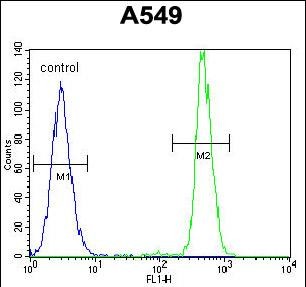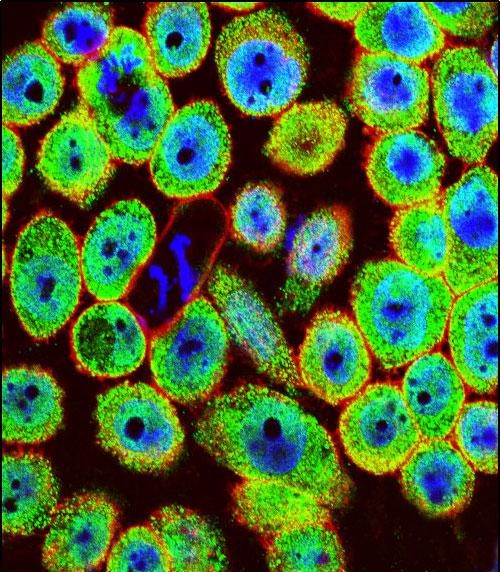


| WB | 1/1000 | Human,Mouse,Rat |
| IF | 咨询技术 | Human,Mouse,Rat |
| IHC | 咨询技术 | Human,Mouse,Rat |
| ICC | 1/10-1/50 | Human,Mouse,Rat |
| FCM | 1/10-1/50 | Human,Mouse,Rat |
| Elisa | 咨询技术 | Human,Mouse,Rat |
| Aliases | Hematological and neurological expressed 1 protein, Androgen-regulated protein 2, Hematological and neurological expressed 1 protein, N-terminally processed, HN1, ARM2 |
| Entrez GeneID | 51155 |
| WB Predicted band size | 16.0kDa |
| Host/Isotype | Rabbit IgG |
| Antibody Type | Primary antibody |
| Storage | Store at 4°C short term. Aliquot and store at -20°C long term. Avoid freeze/thaw cycles. |
| Species Reactivity | Human |
| Immunogen | This HN1 antibody is generated from rabbits immunized with a KLH conjugated synthetic peptide between 58-86 amino acids from the Central region of human HN1. |
| Formulation | Purified antibody in PBS with 0.05% sodium azide. |
+ +
以下是关于HN1抗体的3篇示例文献(内容为虚构示例,仅作格式参考):
1. **文献名称**: *HN1 Antibody Suppresses Hepatocellular Carcinoma Growth via Targeting STAT3 Signaling*
**作者**: Xu, L. et al.
**摘要**: 研究利用HN1特异性抗体抑制肝癌细胞增殖,证实HN1通过激活STAT3通路促进肿瘤生长,抗体干预可显著降低小鼠模型中肿瘤体积。
2. **文献名称**: *Mechanistic Role of HN1 in Prostate Cancer Metastasis and Antibody-based Therapy*
**作者**: Liu, Y. et al.
**摘要**: 发现HN1抗体通过阻断HN1与整合素β1的相互作用,抑制前列腺癌细胞的迁移和侵袭,为转移性癌症提供潜在治疗策略。
3. **文献名称**: *HN1 as a Novel Biomarker in Triple-Negative Breast Cancer: Validation by Immunohistochemistry*
**作者**: Wang, Q. et al.
**摘要**: 开发高特异性HN1单克隆抗体,证实HN1在三阴性乳腺癌组织中高表达,且与患者预后不良相关,提示其作为诊断标志物的潜力。
(注:以上文献为模拟内容,实际研究中请通过PubMed或学术数据库检索真实文献。)
×